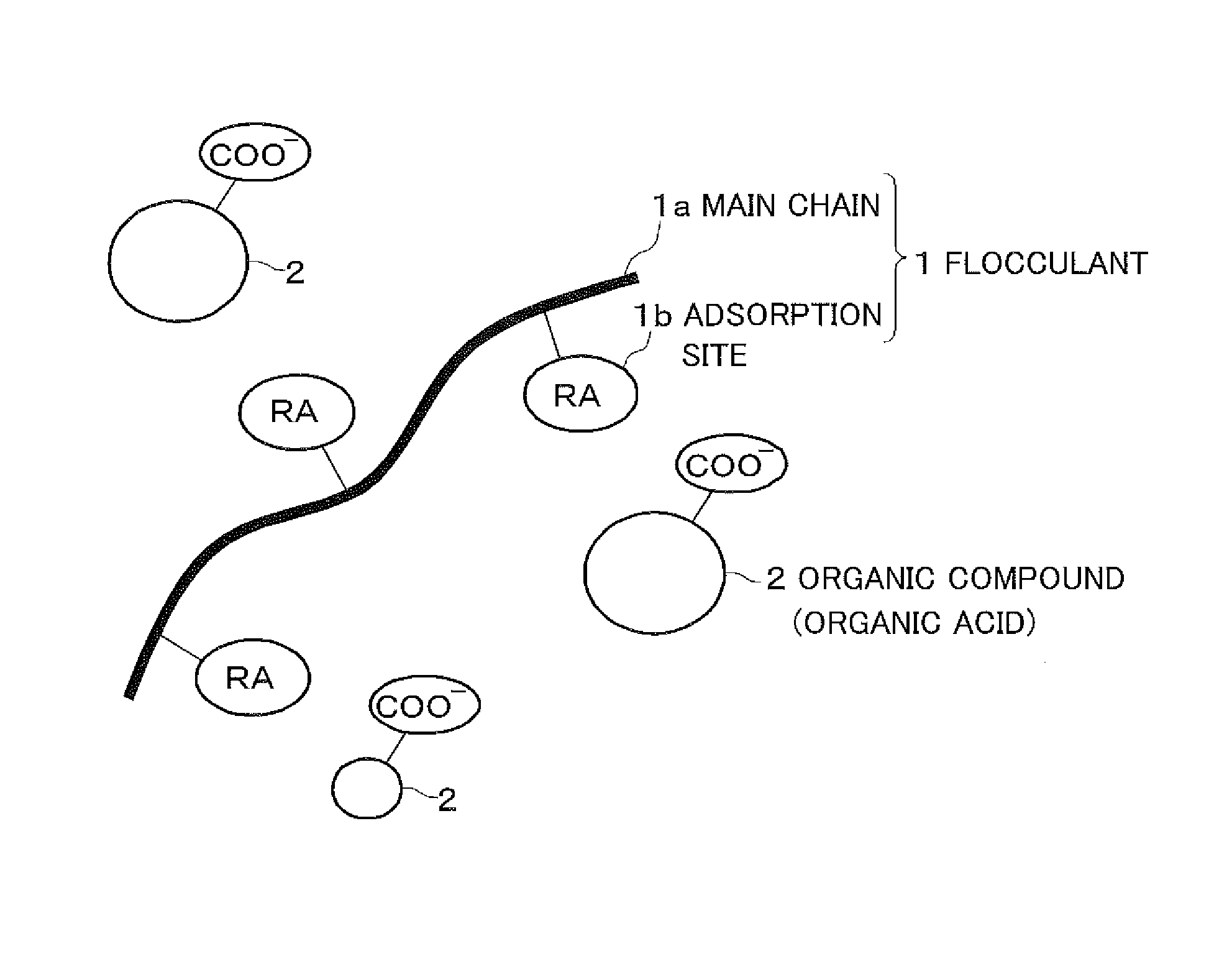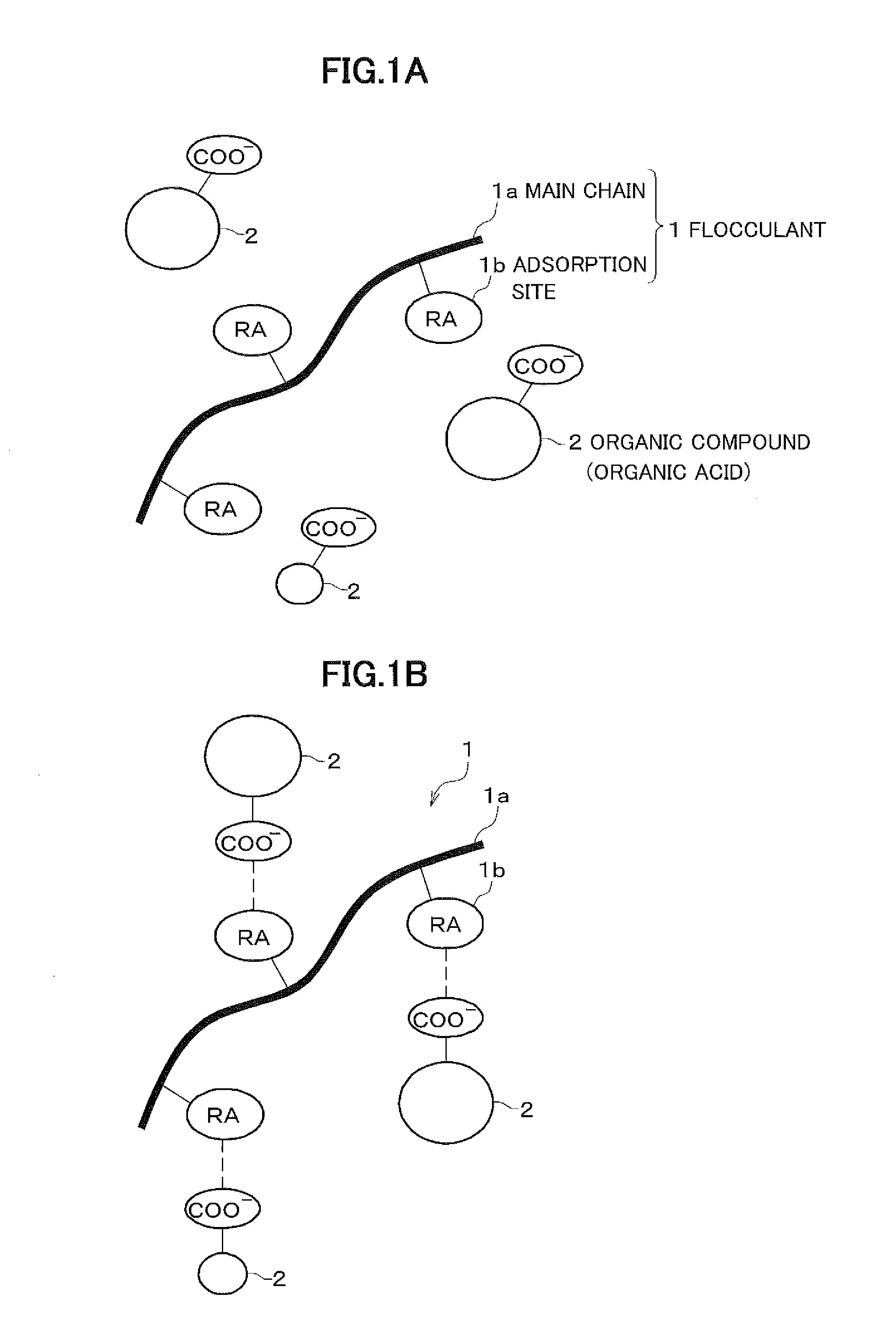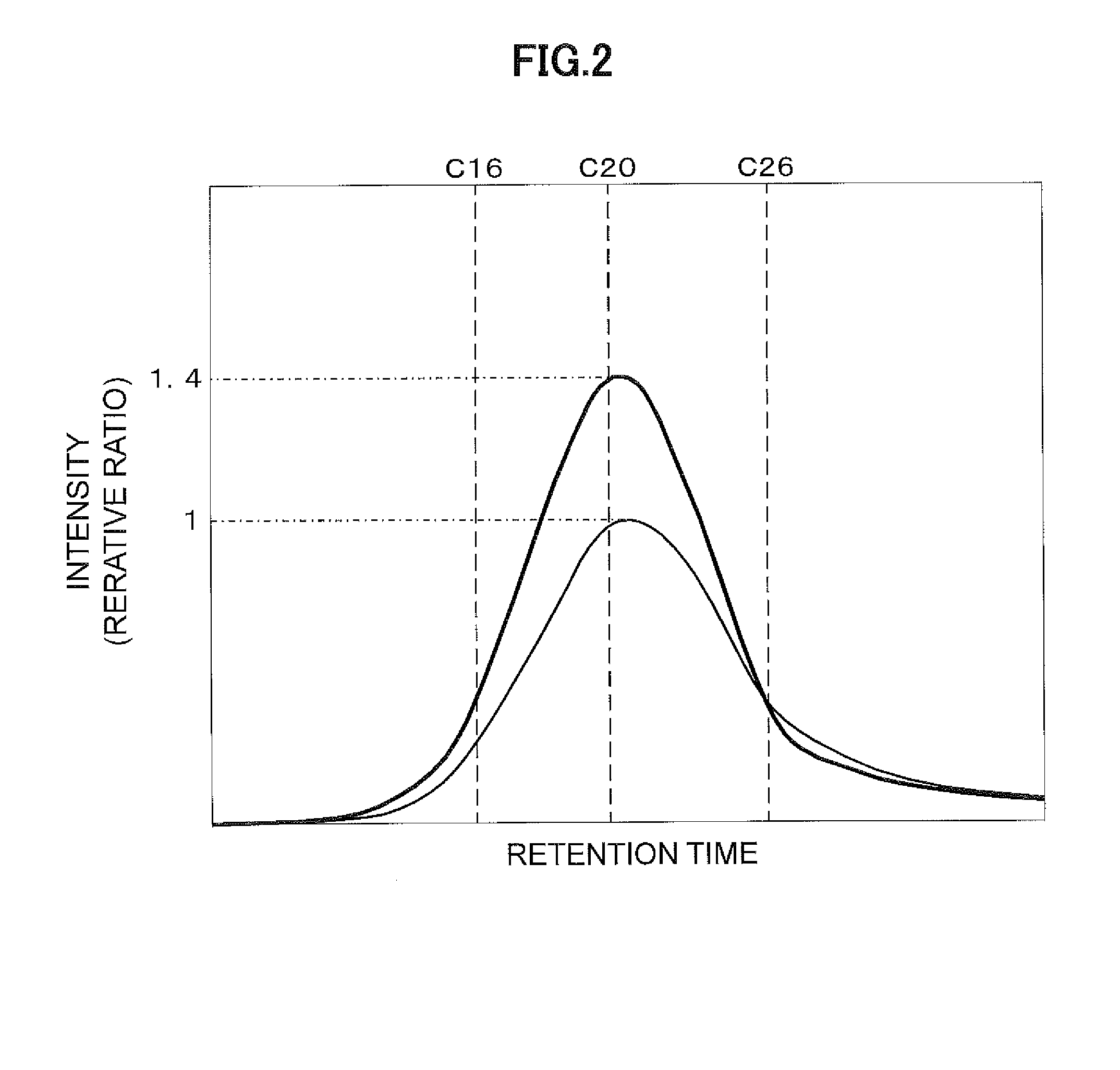Method for treating water and flocculant for organic substances
a technology of organic substances and flocculants, which is applied in the direction of quarries, waste water treatment, other chemical processes, etc., can solve the problems of environmental protection, large amount of water used, and the effect of reducing the environmental impact of the process
- Summary
- Abstract
- Description
- Claims
- Application Information
AI Technical Summary
Benefits of technology
Problems solved by technology
Method used
Image
Examples
example 1
[0094]In Example 1, following the flowchart of FIG. 5, the flocculant A and the flocculant B were mixed and added to the water, whereby the method for treating water was evaluated. As the flocculant A in FIG. 5, used was a flocculant in which the number of the carbon atoms in the linked main chain was 17 (i.e., the distance of the adsorption sites was represented as C17), and the number of the carbon atoms in R1 was 16 in Formula (2). Further, as the flocculant B, used was a flocculant in which the number of the carbon atoms in the linked main chain was 11 (i.e., the distance of the adsorption
[0095]Herein, the structure of the flocculant A was almost the same as the structure of the flocculant B except for the difference in the number of the carbon atoms as mentioned above.
[0096]First, the simulation water thus prepared was added to an flocculation tank. Then, while stirring the water at a constant rate, the mixture of the flocculants A and B was added to the water and stirred. The ...
example 2
[0098]Following the flowchart of FIG. 6, the method for treating water was evaluated in the same manner as in Example 1, except that the flocculant A and the flocculant B were added to the simulation water in a stepwise manner. As a result, the COD value of the treated water was 30 mg / L after the treatment of the water.
[0099]In Example 2, as different from Example 1, the flocculant A and the flocculant B were added to the simulation water at the separated timing. Under such conditions, the organic compounds contained in the water were further sufficiently removed from the water. In particular, the COD value after the treatment of the water was lower than that in Example 1. This demonstrated that the steps of separately mixing the flocculant A and the flocculant B at the different timing enabled the organic compounds to be more sufficiently removed from the water.
PUM
| Property | Measurement | Unit |
|---|---|---|
| retention time | aaaaa | aaaaa |
| retention time | aaaaa | aaaaa |
| COD | aaaaa | aaaaa |
Abstract
Description
Claims
Application Information
 Login to View More
Login to View More - R&D
- Intellectual Property
- Life Sciences
- Materials
- Tech Scout
- Unparalleled Data Quality
- Higher Quality Content
- 60% Fewer Hallucinations
Browse by: Latest US Patents, China's latest patents, Technical Efficacy Thesaurus, Application Domain, Technology Topic, Popular Technical Reports.
© 2025 PatSnap. All rights reserved.Legal|Privacy policy|Modern Slavery Act Transparency Statement|Sitemap|About US| Contact US: help@patsnap.com



